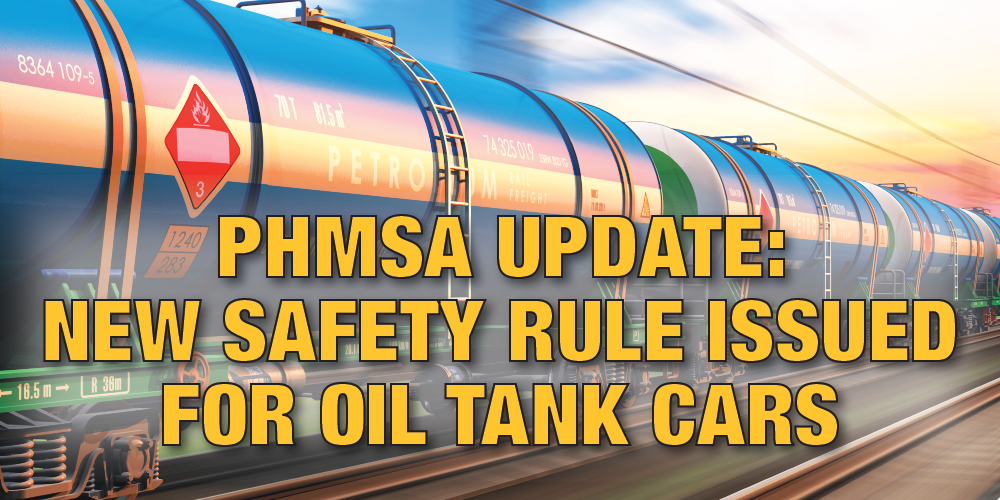Much like Sheryl Crow sang, “A change, could do you good”, at least one would hope. When it comes to PHMSA, change is aimed at improving an already existing process, or adding a new process we can all benefit from. So in this case, I believe Sheryl Crow is right.
With that being said, The U.S. Department of Transportation’s Pipeline and Hazardous Materials Safety Administration (PHMSA), recently issued a final rule that requires railroads to create and submit Comprehensive Oil Spill Response Plans for route segments traveled by High Hazard Flammable Trains also called HHFTs. The rule applies to these trains that are transporting petroleum oil in a block of 20 or more loaded tank cars and trains that have a total of 35 loaded petroleum oil tank cars.
Why the Change?
Incidents involving crude oil can have devastating consequences to local communities and the environment. Countering these effects on the environment can take between a few weeks to many years, depending on the damage caused. For this reason, fast and effective response is essential to rail accidents containing oil. The 174-page final rule is designed to improve the response readiness and decrease the effects of rail accidents and incidents involving petroleum oil and a flammable train. The agency said the rule also is needed due to expansion in U.S. energy production having led to “significant challenges for the country’s transportation system.” This will help to ensure that railroads continue to have comprehensive plans to respond to derailments when they occur and better ensure the safety of communities living near railroads. The new rule will apply to 73 railroad operators at time of issuance, and it should take roughly 180 hours to prepare an initial plan.
What this Means?
The rule revises the oil spill response plan requirements that are currently in place to require railroads to establish geographic response zones along various rail routes and ensure that both personnel and equipment are ready and prepared to respond quickly in the event of an accident. In addition, railroads are required to identify a qualified individual responsible for each response zone, as well as the organization, personnel, and equipment capable of removing and mitigating a worst-case discharge. In terms of increased flexibility, this will allow railroads to submit plans that meet State requirements under certain circumstances and implements a 12 hour response time in all areas. The rule also requires rail carriers to provide information about HHFTs to state and tribal emergency response commissions in accordance with the Fixing America’s Surface Transportation Act of 2015. Located at the link below, the new rule is effective 180 days after the date of publication in the Federal Register.
Stay tuned to ICC Compliance Center’s Newsletters so you can be kept up to speed on any changes that may be coming in the near future in the dangerous goods world.
Other Sources:






